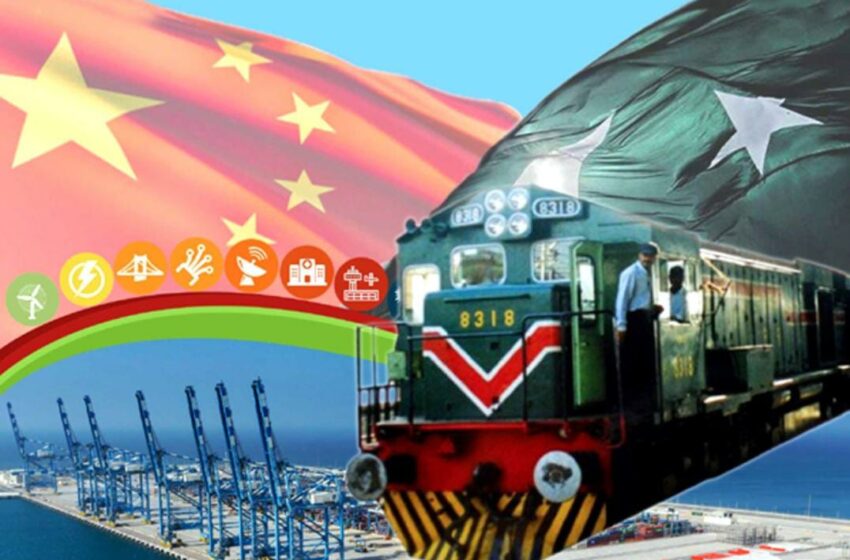CPC and economic prosperity

Editor’s note: The writer is Director of Institute of Peace and Diplomatic Studies, Pakistan. The article reflects the author’s opinions and not necessarily the views of The Daily CPEC.
The Communist Party of China (CPC) has made it to 100 years of revolutionary existence with an enormous impact on China’s economic and social wellbeing. With a historic economic recovery of 18% growth in GDP to 24 trillion yuan in the first quarter of the year despite the pandemic, China’s economy is the future of the world. This triumph is a result of China’s commitment to economic reforms, poverty alleviation, and people’s wellbeing. This economic transformation is not only a boon for the Chinese people but also a manifestation of the concept of shared future.
Today, China is one of the largest economies in the world. Along with the evolution of ideas, norms, and governance driven by modernity and innovation, the competitiveness of CPC is based on its commitment to socialism and people-centric approach. CPC has made dreams a reality by staying true to the pledges made to advance the unstoppable momentum towards national rejuvenation. With a special focus on health, education, and national skill-building, CPC has made a massive investment in the lives of the people. Truly reflecting the wishes and aspirations of the people, CPC builds confidence through practical results.
Since 1978 when the reform and opening-up policy was initiated, CPC has been spearheading the transformation of Chinese society with targets achieved ahead of time. Strategically, the policy discourse of CPC is decorated with grand frameworks and plans instrumental to economic growth. Until 1949, CPC focused on unifying Chinese people against colonialism to win independence. Between 1949 to 1978, CPC rallied the Chinese people to fulfill their dream of socialist revolution and transformation by establishing a strong industrial basis. CPC also rolled out several policy frameworks and plans including Four Modernizations i.e. industry, agriculture, science/technology, and defense. Chinese global trade expanded because of the CPC’s inherent principle of self-determination, solidarity, respect, and non-interference in the internal affairs of other countries.
Since 2013, CPC has taken up tremendous numbers of reforms, which testifies to the sophistication of CPC decision-making and the resolve in reform implementation. An important ability of CPC is defined by the phrase “seeking truth from facts”, reflecting the objectivity and flexibility to alter ways to pinpoint and resolve the problems.
Among the reasons for China’s economic success is the structure of five-year plans and phase-wise development. This has not systematically boosted the economy but also provided the impetus to learn lessons and change the course where it is desired. For the past seven decades, China has applied 14 five-year plans as a strategic way of implementing the reforms. They were tailored to the economic and social conditions of China. Such indigenization of ideas for economic recovery has paved the way for effective execution. These plans serve as a blueprint for economic development and a reflection of China’s goals in the future. Another characteristic is that CPC can mobilize resources.
Driven by its philosophy of development, CPC has managed to develop the Chinese economy at an unprecedented pace, making it the fastest-growing economy in the world. In 2018, China managed to sustain average GDP growth at 9.5% which the World Bank termed as the fastest sustained expansion by a major power in history. This volume of growth enabled China to double its GDP size every eight years and bring 800 million people out of poverty. As a result, China has become the largest economy based on Purchasing Power Parity, Foreign Exchange Reserve, manufacturing, and merchandise trade.
CPC has embraced the new normal driven by potential factors including Covid-19. It is worth mentioning here that China recorded 2.3% positive growth in GDP to achieve 100 Trillion Yuan threshold and foreign goods trade during the pandemic, thanks to its effective containment strategy, Currently, China is remodeling its economy by avoiding fixed investment and exports while focusing on domestic consumption, services, and innovation. This growth model has helped China to evade the “middle income trap”, a point in growth when countries fall short of new sources of growth. Subsequently, China is focusing on domestic production under the Made in China 2025 Initiative aimed to innovate ten key manufacturing sectors.
Under the strong leadership of CPC, the Chinese Dream is not far away. This dream is not limited to Chinese polity but includes people from across the world. Through peaceful rise, China has asserted itself as a leader of public-centric global development under the flag of “Community of Shared Future”. CPC intends to mold current China into a stronger and richer nation by 2050, but definitely, there will be challenges on its way. Being the leader in growth, China welcomes all nations to cooperate on development. BRI and CPEC are phenomenal in extending Chinese cooperation across Asia and the globe.
Muhammad Asif Noor, the writer is Founder Director- Center for BRI and China Studies and Founder Friends of BRI Forum- Institute of Peace and Diplomatic Studies.


